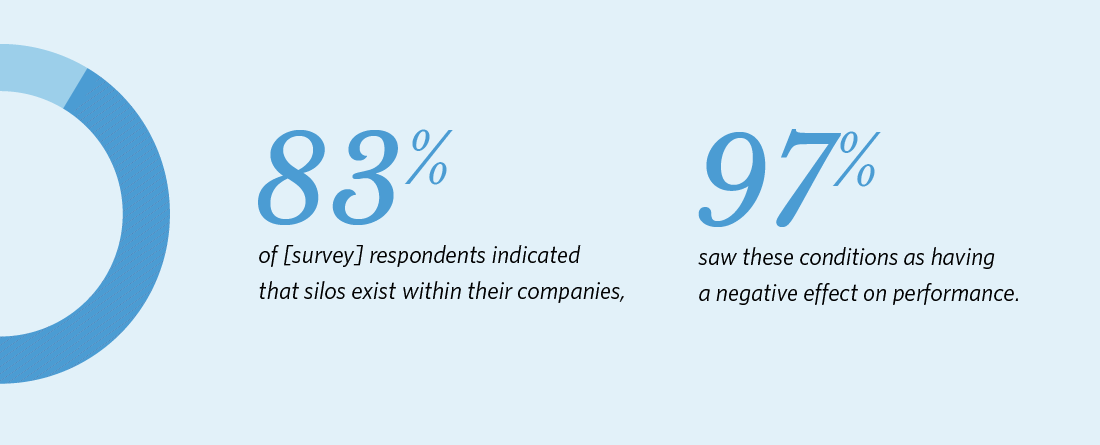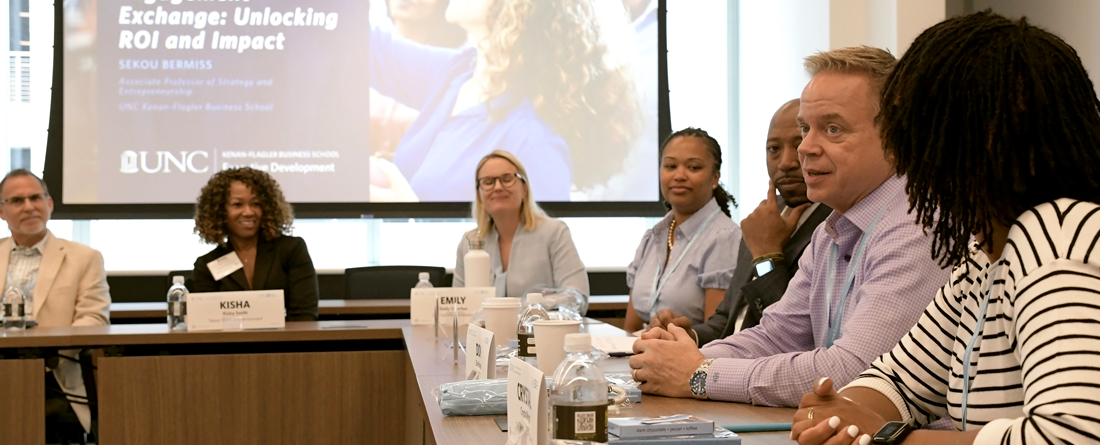
The COVID-19 pandemic proved that knowledge sharing and collaboration are critical for success in this volatile business environment. However, leaders often find themselves struggling within an isolated team or department. They know that a wealth of valuable knowledge exists beyond their own work units. Yet they lack tools that will help them collaborate with other teams who, thanks to the pandemic, may now be working off-site more often than in-office.
By breaking free from the “silo mentality” and adopting an enterprise mindset, leaders can achieve higher performance in their organizations by increasing knowledge sharing and a spirit of collaboration.
Functional Silos: Teamwork-Free Zones
Functional silos form when employees perceive both organizational and psychological barriers between their own core group and other work units. Unfortunately, an article in the journal Global Business Review explains that this mindset is the norm rather than the exception. The authors found that “83% of [survey] respondents indicated that silos exist within their companies, [and] 97% saw these conditions as having a negative effect on performance.”
The drawbacks of the silo mentality are as numerous as they are troubling. The authors of a research paper published in the journal Sustainability discuss how siloed work groups are unwilling to share knowledge, skills, or information with one other. This in turn hampers end-to-end planning, encourages damaging politics and power struggles, suppresses innovation, and lowers motivation.
The rise of remote work in the aftermath of the pandemic poses additional challenges. Researchers who studied communications data at Microsoft found that “shifting to firm-wide remote work [during the pandemic] caused the collaboration network to become more heavily siloed.” This means that remote work risks entrenching the silo mentality even more deeply within organizational units.

How to Break Silo Barriers
The authors of the paper “Silo-Busting: Overcoming the Greatest Threat to Organizational Performance” found that leaders who succeed in breaking themselves and their teams free from the silo mentality reap rewards such as “increased employee engagement and morale, quicker and more efficient decision making, reduction in employee errors, [and] improved goal achievement.” Therefore, the researchers recommend the following strategies for adopting an enterprise mindset that transcends individual work units.
1. Success Through Sharing
Leaders can foster a shared sense of identity by first creating, and then modeling, unifying values and goals that emphasize cooperation and collaboration.
2. Mix It Up
Give colleagues more opportunities to work together by organizing cross-unit programs and projects that encourage experimentation and innovation.
3. Let the Information Flow
Keep everyone “in the loop” by installing a common IT platform and systems across all work units. Shared processes and virtual spaces are especially important in organizations where remote or hybrid work schedules afford colleagues fewer opportunities to interact in person.
4. Intentional Recruiting
Build a spirit of cooperation and collaboration into your organization’s DNA by recruiting for networking and communication skills.
5. Positive Reinforcement
Publicly incentivize and reward individuals who collaborate with colleagues from other teams and departments.
Free Your Mind
Thanks to the rise of off-site work, the “us versus them” silo mentality appears to have become more ingrained in the aftermath of the pandemic. However, leaders who are willing to break functional barriers and foster closer relationships with far-flung colleagues can expect to reap many rewards. By implementing strategies that inspire team members to think and act as a single enterprise with a shared goal, leaders can encourage knowledge sharing and, in turn, strengthen the overall performance of their organizations.





